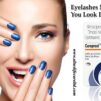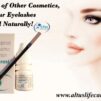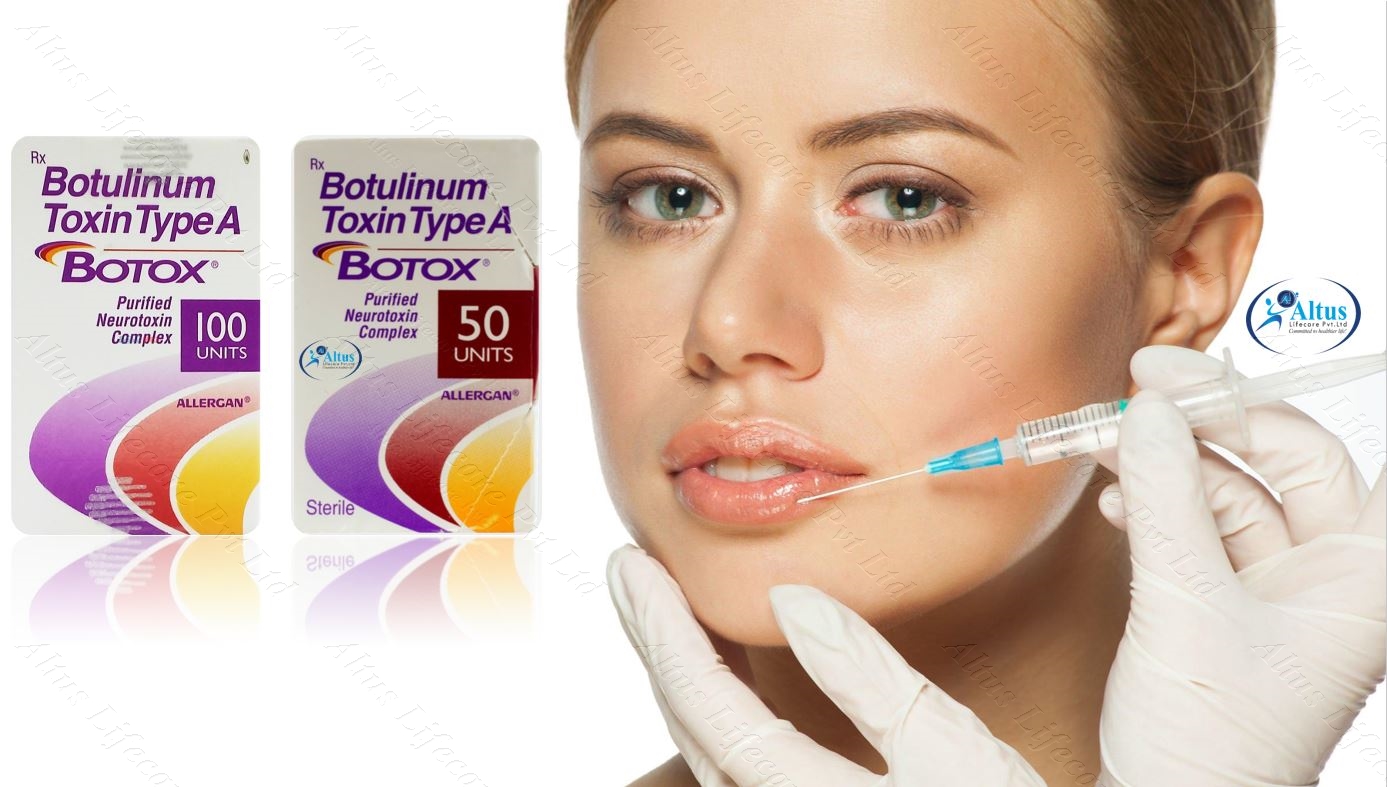
- Botox Injection (onabotulinumtoxinA) also called botulinum toxin type A, is made from the bacteria that causes botulism. Botulinum toxin blocks nerve activity in the muscles, causing a temporary reduction in muscle activity.
- Botox is used to treat cervical dystonia (severe spasms in the neck muscles). It is also used to treat muscle spasms (stiffness) in the upper limbs (elbows, wrists, fingers) or lower limbs (ankles, toes). Botox is also used to treat severe underarm sweating (hyperhidrosis).
- Botox is also used to treat certain eye muscle conditions caused by nerve disorders. This includes uncontrolled blinking or spasm of the eyelids and a condition in which the eyes do not point in the same direction.
- Botox is also used to treat overactive bladder and incontinence (urine leakage) caused by nerve disorders such as spinal cord injury or multiple sclerosis. It is also used to prevent chronic migraine headaches in adults who have migraines for more than 15 days per month, each lasting 4 hours or longer. This medicine should not be used to treat a common tension headache.
- Botox Cosmetic is used to temporarily lessen the appearance of facial wrinkles.
Important information:
- You should not use Botox if you have an infection in the area where the medicine will be injected. Botox should not be used to treat overactive bladder or incontinence if you have a current bladder infection or if you are unable to urinate (unless you routinely use a catheter).
- The botulinum toxin contained in this medication can spread to other body areas beyond where it was injected. This has caused serious life-threatening side effects in some people receiving botulinum toxin injections, even for cosmetic purposes.
- Call your doctor at once if you have a hoarse voice, drooping eyelids, vision problems, severe muscle weakness, loss of bladder control, or trouble breathing, talking, or swallowing. Some of these effects can occur up to several hours or several weeks after receiving a Botox injection.
Before I receive Botox:
- You should not receive Botox if you are allergic to botulinum toxin, or if you have: an infection in the area where the medicine will be injected; or (for overactive bladder and incontinence) if you have a current bladder infection or if you are unable to urinate and you do not routinely use a catheter.
- To make sure Botox is safe for you, tell your doctor if you have: amyotrophic lateral sclerosis (ALS, or “Lou Gehrig’s disease”); myasthenia gravis; Lambert-Eaton syndrome; a breathing disorder such as asthma or emphysema; problems with swallowing; facial muscle weakness (droopy eyelids, weak forehead, trouble raising your eyebrows); a change in the normal appearance of your face; bleeding problems; heart disease; if you have had or will have surgery (especially on your face); if you have recently used a blood thinner (warfarin, Coumadin, and others) or been treated with an injectable antibiotic; if you have ever received other botulinum toxin injections such as Dysport or Myobloc (especially in the last 4 months); or if you have ever had a side effect after receiving a botulinum toxin in the past. Botox is made from human plasma (part of the blood) which may contain viruses and other infectious agents. Donated plasma is tested and treated to reduce the risk of it containing infectious agents, but there is still a small possibility it could transmit disease. Talk with your doctor about the risks and benefits of using this medication
Botox (Onabotulinum toxin A)
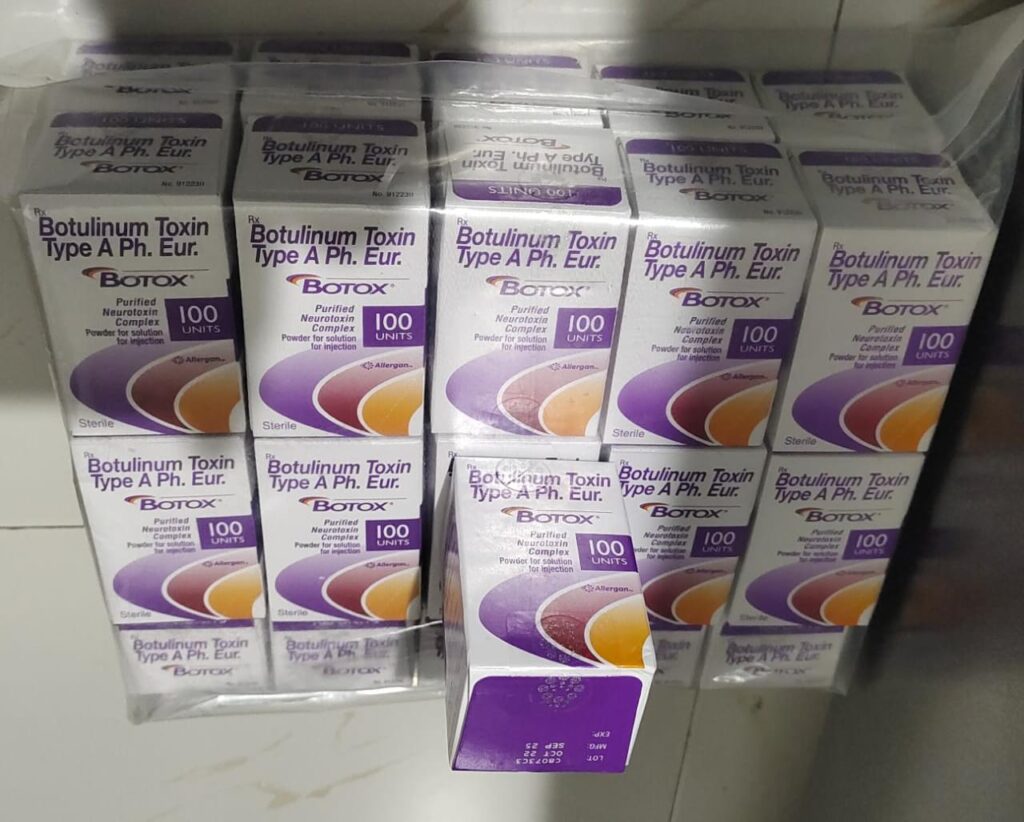
Botox, or onabotulinum toxin Type A, is an effective treatment option for urgency urinary incontinence or overactive bladder symptoms in women with and without underlying neurologic disorders. In both of these conditions, the muscle in the wall of the bladder, called the detrusor muscle, may contract too often or at inappropriate times. This can cause sudden urgency to urinate, sometimes with urinary leakage. Many people may recognize the name Botox. This is a brand name for onabotulinum toxin Type A, a protein obtained from bacteria in a controlled laboratory setting, similar to the way that penicillin is obtained from mold. When injected into the bladder wall, onabotulinum toxin Type A works by relaxing the bladder muscle, inhibiting the excessive contractions of this muscle. This can significantly improve the symptoms of urinary urgency and urgency incontinence.
How are onabotulinum toxin Type A injections performed?
At Northwestern Medicine, your urogynecologist will determine if you are a good candidate for onabotulinum toxin Type A injection into your bladder. Women with urgency incontinence are good candidates for onabotulinum toxin A if they do not want to take daily medications or cannot tolerate them secondary to side effects such as dry eyes, dry mouth and constipation. The procedure is done by your urogynecologist in the office. A numbing gel will be placed in your urethra, and a cystoscope will be placed into your bladder. A cystoscope is a narrow camera with a light source that allows your urogynecologist to look inside your bladder. The onabotulinum toxin Type A is then injected into the bladder muscle through the cystoscope.
How successful is onabotulinum toxin Type A?
Onabotulinum toxin Type A is a very effective treatment for urgency incontinence or overactive bladder symptoms. Clinical trials demonstrated the effectiveness of onabotulinum toxin Type A in the treatment of urgency incontinence and refractory urgency incontinence in healthy women and those with neurologic disorders, such as multiple sclerosis and Parkinson’s disease. The effects of onabotulinum toxin Type A are not permanent, typically lasting for six to nine months, and the procedure can be repeated after it wears off.
Are there risks or side-effects associated with onabotulinum toxin Type A?
Recurrent urinary tract infection and difficulty emptying your bladder are known, albeit temporary, risks of onabotulinum toxin Type A. You will receive an antibiotic at the time of your injection to reduce your risk of urinary tract infection. Depending on the dosage of onabotulinum toxin Type A injected into your bladder, you have a 5 to 8 percent chance of temporarily needing to empty your bladder with a catheter. Therefore, we often recommend that you learn to perform self-catheterization prior to the procedure—our nurses will teach you how to do this quite easily.
What is the recovery?
Onabotulinum toxin Type A does not work instantly; it takes up to two weeks to work maximally. It is not uncommon to have some burning or even a small amount of bleeding with urination immediately after your procedure. It is also normal to feel a sense of urgency immediately after the procedure, but this will subside over the course of the day.
How to use Onabotulinumtoxina 100 Unit Solution For Injection?

Read the Medication Guide and, if available, the Patient Information Leaflet provided by your pharmacist before you start using this medication and each time you get an injection. If you have any questions regarding the information, consult your doctor or pharmacist. This medication is given by injection by an experienced health care professional. It is injected into the affected muscles (intramuscularly) when treating eye disorders, muscle stiffness/spasms, and wrinkles. When used to prevent migraines, it is injected into the muscles of the head and neck. It is injected into the skin (intradermally) for the treatment of excessive sweating. For the treatment of drooling/excess saliva, this medication is injected into the salivary glands. When treating overactive bladder, it is injected into the bladder. Your dose, the number of injections, the site of injections, and how often you receive the medication will be determined by your condition and your response to therapy. For children, the dose is also based on weight. Most people start to see an effect within a few days to 2 weeks, and the effect usually lasts 3 to 6 months.
Side Effects
See also Warning section.
Because this medication is given at the site of your condition, most of the side effects occur close to where the medication is injected. Redness, bruising, infection, and pain at the injection site may occur.
Dizziness, mild difficulty swallowing, respiratory infections such as cold or flu, pain, nausea, headache, and muscle weakness may occur when this medication is used to relax muscles. Double vision, drooping or swollen eyelid, eye irritation, dry eyes, tearing, reduced blinking, and increased sensitivity to light may also occur.
If any of these effects last or get worse, notify your doctor or pharmacist promptly. You may require protective eye drops/ointments, an eye patch, or other treatment.
When this medication is used to prevent migraines, side effects such as headache, neck pain, and drooping eyelid may occur.
When this medication is used for excessive sweating, side effects such as non-underarm sweating, respiratory infections such as cold or flu, headache, fever, neck or back pain, and anxiety may occur.
When this medication is used for overactive bladder, side effects such as urinary tract infections, burning/painful urination, fever, or difficulty urinating may occur.
If any of these effects last or get worse, notify your doctor or pharmacist promptly.
Remember that this medication has been prescribed because your doctor has judged that the benefit to you is greater than the risk of side effects. Many people using this medication do not have serious side effects.
A very serious allergic reaction to this drug is rare. However, get medical help right away if you notice any symptoms of a serious allergic reaction, including: itching/swelling (especially of the face/tongue/throat), rash, severe dizziness, trouble breathing.
This is not a complete list of possible side effects. If you notice other effects not listed above, contact your doctor or pharmacist.
Precautions
Before using this medication, tell your doctor or pharmacist if you are allergic to it; or if you have any other allergies. This product may contain inactive ingredients (such as cow’s milk protein found in some products), which can cause allergic reactions or other problems. Talk to your pharmacist for more details.
Before using this medication, tell your doctor your medical history, especially of: bleeding problems, eye surgery, certain eye problem (glaucoma), heart disease, diabetes, signs of infection near the injection site, urinary tract infection, inability to urinate, muscle/nerve disorders (such as Lou Gehrig’s disease-ALS, myasthenia gravis), seizures, trouble swallowing (dysphagia), breathing problems (such as asthma, emphysema, aspiration-type pneumonia), treatment with any botulinum toxin product (especially in the last 4 months).
This drug may make cause muscle weakness, droopy eyelids, or blurred vision. Do not drive, use machinery, or do any activity that requires alertness or clear vision until you are sure you can perform such activities safely. Limit alcoholic beverages.
Before having surgery, tell your doctor or dentist that you are using this medication.
Some brands of this medication contain albumin made from human blood. Even though the blood is carefully tested, and this medication goes through a special manufacturing process, there is an extremely small chance that you may get serious infections from the medication. Consult your doctor or pharmacist for more information.
Older adults using this drug for overactive bladder may be more sensitive to the side effects of this drug, especially urinary effects.
Children using this drug for muscle spasms may be more sensitive to the side effects of this drug, including difficulty breathing or swallowing. See Warning section. Discuss the risks and benefits with the doctor.
This medication should be used only if clearly needed during pregnancy. Discuss the risks and benefits with your doctor. Use for the cosmetic treatment of wrinkles is not recommended during pregnancy.
It is not known whether this medication passes into breast milk.
Consult your pharmacist or physician.
Interactions
Drug interactions may change how your medications work or increase your risk for serious side effects. This document does not contain all possible drug interactions. Keep a list of all the products you use (including prescription/nonprescription drugs and herbal products) and share it with your doctor and pharmacist. Do not start, stop, or change the dosage of any medicines without your doctor’s approval.
Some products that may interact with this drug include: certain antibiotics (including aminoglycosides such as gentamicin, polymyxin), anticoagulants (such as warfarin), Alzheimer’s disease drugs (such as galantamine, rivastigmine, tacrine), myasthenia gravis drugs (such as ambenonium, pyridostigmine), quinidine.
Botox 50IU Botulinum Toxin Type A
Botox (onabotulinumtoxinA), also called botulinum toxin type A, is made from the bacteria that causes botulism. Botulinum toxin blocks nerve activity in the muscles, causing a temporary reduction in muscle activity.
Botox is used to treat cervical dystonia (severe spasms in the neck muscles). It is also used to treat muscle spasms (stiffness) in the upper limbs (elbows, wrists, fingers) or lower limbs (ankles, toes). Botox is also used to treat severe underarm sweating (hyperhidrosis). Botox is also used to treat certain eye muscle conditions caused by nerve disorders. This includes uncontrolled blinking or spasm of the eyelids, and a condition in which the eyes do not point in the same direction. Botox is also used to treat overactive bladder and incontinence (urine leakage) caused by nerve disorders such as spinal cord injury or multiple sclerosis. It is also used to prevent chronic migraine headaches in adults who have migraines for more than 15 days per month, each lasting 4 hours or longer. This medicine should not be used to treat a common tension headache.
Botox Cosmetic is used to temporarily lessen the appearance of facial wrinkles.
Important information
You should not use Botox if you have an infection in the area where the medicine will be injected. Botox should not be used to treat overactive bladder or incontinence if you have a current bladder infection or if you are unable to urinate (unless you routinely use a catheter). It contained in this medication can spread to other body areas beyond where it was injected. This has caused serious life-threatening side effects in some people receiving even for cosmetic purposes.
Call your doctor at once if you have a hoarse voice, drooping eyelids, vision problems, severe muscle weakness, loss of bladder control, or trouble breathing, talking, or swallowing. Some of these effects can occur up to several hours or several weeks after receiving a Botox injection.
Before I receive Botox
You should not receive Botox if you are allergic to botulinum toxin, or if you have:
an infection in the area where the medicine will be injected; or
(for overactive bladder and incontinence) if you have a current bladder infection or if you are unable to urinate and you do not routinely use a catheter.
To make sure Botox is safe for you, tell your doctor if you have:
amyotrophic lateral sclerosis (ALS, or ?Lou Gehrig?s disease?);

myasthenia gravis;
Lambert-Eaton syndrome;
a breathing disorder such as asthma or emphysema;
problems with swallowing;
facial muscle weakness (droopy eyelids, weak forehead, trouble raising your eyebrows);
a change in the normal appearance of your face;
bleeding problems;
heart disease;
if you have had or will have surgery (especially on your face);
if you have recently used a blood thinner (warfarin, Coumadin, and others) or been treated with an injectable antibiotic;
if you have ever received other botulinum toxin injections such as Dysport or Myobloc (especially in the last 4 months); or
if you have ever had a side effect after receiving a botulinum toxin in the past.
Botox is made from human plasma (part of the blood) which may contain viruses and other infectious agents. Donated plasma is tested and treated to reduce the risk of it containing infectious agents, but there is still a small possibility it could transmit disease. Talk with your doctor about the risks and benefits of using this medication.
Uses of Botox 50 Injection
What is it prescribed for?
- Muscle spasticity
This medicine is used for the treatment of muscle spasticity (a condition of muscle stiffness and tightness) of upper and lower limbs (arms and legs) in adult patients. It is also used for the treatment of muscle spasticity of upper limbs (arms) in pediatric patients. - Blepharospasm
This medicine is used for the treatment of abnormal contraction of the eyelid muscles or eye twitching that occur due to nerve disorders. - Cervical Dystonia
This medicine is used for the treatment of cervical dystonia, also known as spasmodic torticollis, which is a painful condition where the neck muscles contract involuntarily, causing your head to twist or turn to one side. - Overactive Bladder
This medicine is used for the treatment of overactive bladder with urinary incontinence, urgency, and frequency in patients who have shown an inadequate response to or cannot use anticholinergic medications. - Facial lines
This medicine is used for the treatment of moderate to severe vertical lines between the eyebrows (glabellar lines), moderate to severe lateral canthal lines (crow’s feet lines), and moderate to severe forehead lines seen at maximum eyebrow elevation. - Chronic migraine
This medicine is used for the prevention of severe throbbing headaches in adult patients. - Strabismus
This medicine is used for the treatment of strabismus or crossed eye, an eye condition where the eyes do not properly align with each other and point in different directions. - Hyperhidrosis
This medicine is used for the treatment of excessive sweating in patients who have shown an
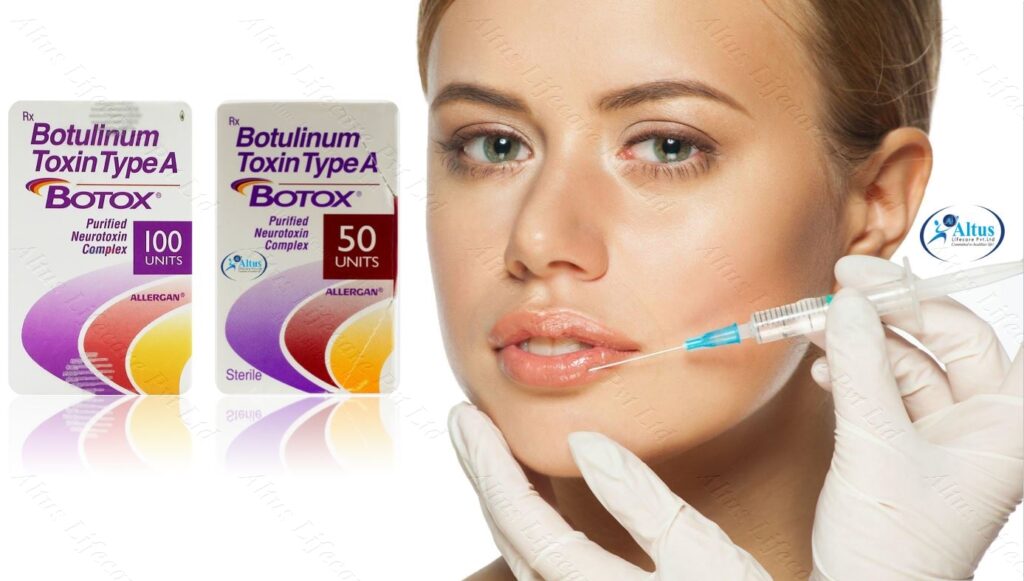
Buy Botox Injection online from www.worldclasstretinoin.com



